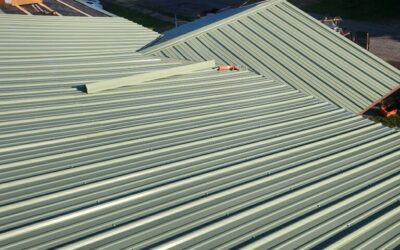Fire-Resistant Shingles: Everything Homeowners Need to Know for Safety and Protection
When it comes to protecting your home, your roof plays a crucial role—especially in defending against threats like fire. While many homeowners focus on aesthetics, durability, and energy efficiency, fire resistance is one of the most important yet often overlooked aspects of roofing materials. In this comprehensive guide, we’ll dive deep into fire-resistant shingles, explaining how they work, their benefits, available materials, fire ratings, and how homeowners in Northeast Ohio can make informed choices with help from trusted contractors like S&K Construction and Remodeling LLC.
Why Fire Resistance Matters for Roofing
A house fire can spread in seconds, and your roof is often one of the most vulnerable parts of your home. Here’s why:
- Windborne embers can land on your roof and ignite it.
- Nearby wildfires or structure fires can spread quickly through flammable roofing materials.
- Lightning strikes, electrical faults, or chimney sparks can start roof fires internally.
Choosing fire-resistant shingles adds a critical layer of protection. For homeowners in areas like Youngstown, Cleveland, Mentor, Jefferson, Ashtabula, and surrounding parts of Northeast Ohio, this is more than just precaution—it’s peace of mind.
What Are Fire-Resistant Shingles?
Fire-resistant shingles are roofing materials designed to reduce the likelihood of ignition and slow the spread of flames. They are manufactured with materials that resist catching fire or are treated with fire-retardant chemicals.
The effectiveness of fire-resistant shingles is rated by a standardized classification system, which we’ll cover next.
Understanding Fire Ratings: Class A, B, and C
The ASTM E108 or UL 790 test standards are used to evaluate the fire resistance of roofing materials in the U.S. Shingles are classified into one of three fire ratings:
Class A (Highest Level of Protection)
- Withstands severe fire exposure
- Effective against flame penetration and ember spread
- Common in asphalt fiberglass shingles, metal, clay, and concrete tiles
Class B
- Withstands moderate fire exposure
- Less common and often used in regions with lower fire risk
Class C
- Withstands light fire exposure
- Provides minimal protection
- Not recommended for homes with any significant fire threat
Most homeowners should opt for Class A shingles, especially if they want long-term safety and potentially lower insurance premiums.
Materials Used in Fire-Resistant Shingles
Let’s explore the most common materials used in fire-resistant shingles:
1. Fiberglass Asphalt Shingles (Class A)
Fiberglass-based asphalt shingles are among the most popular choices for residential roofing. They offer:
- Class A fire resistance
- Cost-effectiveness
- Easy installation
- Good durability
Fiberglass doesn’t catch fire easily, and the granules on the shingle surface help resist flames.
2. Metal Roofing
Metal shingles and panels are non-combustible and usually rated Class A. Benefits include:
- Excellent fire resistance
- Long lifespan (40–70 years)
- Low maintenance
- Energy efficiency
While metal roofing may have a higher initial cost, it pays off in safety and longevity.
3. Clay and Concrete Tile
These are naturally fire-resistant and commonly used in warmer climates, but they’re gaining popularity nationwide due to:
- Non-combustibility
- Long lifespan
- Distinct appearance
They’re heavier and may require structural reinforcement, which adds to installation cost.
4. Slate Shingles
Slate is a natural stone and completely non-combustible. Benefits include:
- Class A rating
- Stunning, high-end appearance
- Extremely durable (100+ years)
Drawbacks include weight and high upfront costs, but for those who want premium protection, slate is unmatched.
5. Composite and Synthetic Shingles
These shingles are made to mimic wood or slate but are engineered to be fire-resistant. They often have:
- Class A rating
- Lighter weight than natural stone
- Impact and weather resistance
How Fire-Resistant Shingles Protect Your Home
Here’s how these specially designed shingles work to safeguard your home:
Ember Resistance
In wildfires or nearby fires, embers can land on your roof and smolder. Fire-resistant shingles won’t ignite easily, reducing the risk of the fire spreading.
Slowing Flame Spread
Even if flames reach the roof, Class A shingles can significantly slow the rate at which fire spreads, allowing more time for emergency response and evacuation.
Insulation Against Heat
Some fire-rated shingles have insulating layers that slow heat transfer, helping protect attic spaces and upper floors.
The Role of Underlayment and Roof Decking
Fire resistance doesn’t stop with the shingles. The entire roofing system plays a role:
- Fire-resistant underlayment (like fiberglass-reinforced felt or fire-rated synthetic underlayment) adds a second line of defense.
- Plywood vs. fire-rated decking: Opting for fire-rated sheathing can enhance your home’s fire performance.
At S&K Construction and Remodeling LLC, we always consider the entire roofing assembly—underlayment, ventilation, and deck materials—to ensure maximum fire safety.
Building Codes and Fire Resistance in Ohio
While Ohio may not be known for wildfires like California, fire safety still matters:
- Chimney sparks and lightning strikes are common fire causes in the Midwest.
- Local building codes may recommend or require Class A materials, especially for new construction or high-density neighborhoods.
- Insurance companies may offer discounts for fire-resistant roofing, so upgrading can pay off financially.
S&K Construction and Remodeling LLC, based in Jefferson, OH, ensures all projects meet or exceed state and local fire safety codes.
Insurance and Fire-Resistant Roofing
Installing Class A fire-resistant shingles can:
- Lower your home insurance premium
- Increase home value
- Provide added protection in claims if a fire occurs
Always ask your insurer about discounts or incentives for installing a fire-resistant roof.
Common Myths About Fire-Resistant Shingles
Myth #1: All Asphalt Shingles Are Fireproof
Reality: Only fiberglass-based asphalt shingles are Class A rated. Organic-mat asphalt shingles offer less resistance.
Myth #2: Fire-Resistant Means Fire-Proof
Reality: No roofing material is 100% fireproof. Fire-resistant shingles slow ignition and spread but won’t eliminate risk entirely.
Myth #3: Fire-Resistant Roofing Is Too Expensive
Reality: Fiberglass shingles are affordable and offer Class A protection. Metal or synthetic materials may cost more, but they deliver excellent value over time.
How to Maintain Fire-Resistant Roofing
Even the most fire-resistant roof needs proper maintenance:
- Clear debris from gutters and roof valleys—dry leaves and pine needles can ignite.
- Inspect regularly for damaged shingles or gaps where fire can spread.
- Trim overhanging branches that can drop flammable material.
- Check flashing and vents to ensure there are no entry points for embers.
S&K Construction and Remodeling LLC offers routine inspections and maintenance services throughout Northeast Ohio.
Cost of Fire-Resistant Shingles
Here’s a general cost comparison for different fire-resistant roofing types (materials only):
| Material | Cost per Sq. Ft. | Fire Rating | Lifespan |
|---|---|---|---|
| Fiberglass Asphalt | $1.00 – $4.00 | Class A | 20–30 years |
| Metal Roofing | $6.00 – $12.00 | Class A | 40–70 years |
| Clay or Concrete Tile | $8.00 – $15.00 | Class A | 50+ years |
| Slate | $10.00 – $20.00 | Class A | 100+ years |
| Synthetic/Composite | $4.00 – $10.00 | Class A | 30–50 years |
Labor, underlayment, and local conditions will affect total costs. S&K offers free estimates and financing options to help Northeast Ohio homeowners invest in safer roofs without breaking the bank.
Why Choose S&K Construction and Remodeling LLC?
Located in Jefferson, Ohio, and serving Ashtabula County, Lake County, Geauga County, Trumbull County, and Cuyahoga County, S&K is an Owens Corning Preferred Contractor with a reputation built on quality, trust, and safety.
What We Offer:
- Free inspections and fire safety evaluations
- Owens Corning Duration® Class A shingles
- Expert installation and ventilation design
- Insurance claim support
- 5-star Google reviews from satisfied homeowners
We understand that choosing the right roof is a big decision—and we’re here to walk you through every step of it.
Final Thoughts: Is It Time to Upgrade Your Roof?
If your current shingles are old, damaged, or rated below Class A, it might be time for a fire-resistant upgrade. Investing in fire-resistant roofing means:
- Protecting your home and family
- Boosting resale value
- Gaining insurance benefits
- Increasing peace of mind
Whether you’re building new, remodeling, or just exploring your options, S&K Construction and Remodeling LLC is here to help. We’ll inspect your current roof, explain your best options, and install a fire-resistant system that’s built to last.
Contact S&K Construction and Remodeling LLC Today
Ready to protect your home with fire-resistant shingles?
📍 Serving Northeast Ohio: Youngstown, Cleveland, Jefferson, Ashtabula, Mentor, Painesville, Willoughby, and surrounding areas.
🌐 Visit: www.skconstructionohio.com
📝 Request your free estimate and inspection!
Don’t wait for a fire to remind you how important your roof is. Upgrade to fire-resistant shingles with S&K Construction and Remodeling LLC and safeguard your home today.
 (440) 307-2060
(440) 307-2060


